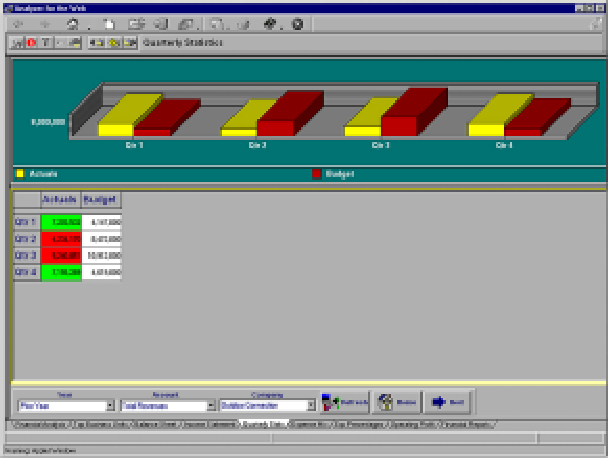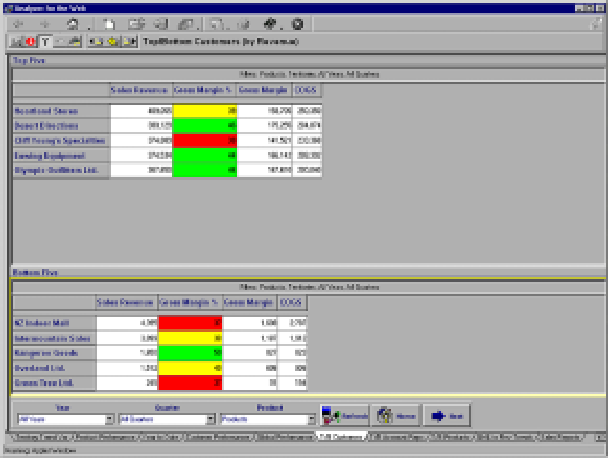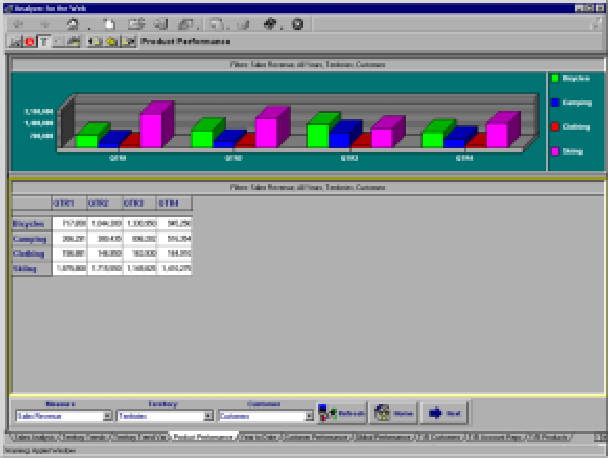Perhaps the single greatest challenge for organizations today is finding, collaborating, and communicating information and ideas across an enterprise with multiple remote locations. A truly global organization, in which employees are dispersed throughout the world, is the most dramatic example, but even organizations with employees in multiple locations within the same city face communication and information distribution dilemmas. This challenge becomes further complicated for employees who travel from one place to another, always logging in from a different location.
Likewise, employee workflow boundaries are becoming evermore fluid as people extend work into other areas of their lives. Increasingly, people are using their computers to work from home, dialing into a corporate server to access the Internet or a corporate intranet as they would from a corporate office. For a small group of workers, all the information they need is readily accessible through their computers from any location, allowing them to generate reports and send email with ease. But for most people, the complexities of remote connectivity make it difficult to function efficiently from random locations.
As many organizations have realized, these trends are creating a critical need for a single source of accurate data that allows enterprise workers to take advantage of the speed of business that technology facilitates. Remote connectivity, regardless of the application being used, is the key to success because it enables a level of communication and collaboration rarely found in organizations today. And to the surprise of many, the ability to deliver truly global solutions on a daily or hourly basis is possible with existing enterprise business intelligence technologies.
Defining a Successful Warehouse
When an organization has a clear vision of its ongoing business intelligence needs across strategic business units, careful selection and implementation of a data warehouse can produce a variety of business benefits:
• It facilitates effective communication and collaboration among professionals in a variety of functions throughout the organization.
• Its ease of use, reliability, and accessibility benefit users, who can readily optimize the system’s capabilities. It gives users the ability to securely span from the
highest summary to the lowest level of raw data, facilitating analysis that gives all users a single, consistent version of the truth.
• It provides extensible solutions that grow with an organization’s requirements over time.
• It requires minimal IT involvement to maintain the solution and a lower cost of ownership over time.
Communication and Collaboration
As organizational structures flatten, employees at all levels are responsible for making decisions more quickly in order to stay ahead of changing business and market conditions. This need for faster decision making has created a pervasive need for analytical information. Unlike the traditional organizational model, in which 100 percent of the critical business information rests in the hands of 10 percent or less of the company (i.e., the management team), this flatter organizational structure mandates that 100 percent of the information consumers within the organization have access to critical information. As a result, information derived from corporate data must be disseminated to a greater number of people.
To be truly effective, data warehouses must address the workflow issues of professionals who need to access accurate, reliable information, whether they are in the office, at home, or on the road. An organization’s ability to rapidly collect, organize, analyze, and distribute corporate data to decision-makers enterprise-wide increasingly affects its ability to maximize revenues and efficiently manage operations, as shown in Figure 1. To meet these work demands, organizations must select a business intelligence solution that empowers users to leverage data through ad hoc information access (e.g., a spontaneous query of business data), enterprise reporting (e.g., a production-level report that is distributed throughout the enterprise), and analytics (e.g., the dynamic analysis of business data in a speed-of-thought paradigm).
Improved information delivery across the corporate enterprise allows organizations to share business information among all the users who need it to accomplish their daily responsibilities. The latest generation of enterprise reporting tools addresses the needs of an even broader base of users. These tools allow users to share information across the enterprise and provide for secure deployment of query and report results. Access to information is as easy as point and click, users have timely access to the most recent information, content is consistent and reliable, and minimal training is required.
With these types of reporting tools at their fingertips, users have the ability to quickly make more informed and accurate business decisions, as shown in Figure 2. These tools also enhance or revise existing business applications such as sales or commission reports. In addition to enterprise reporting, Web technology can enable broader deployment of analytics. For example, they can facilitate more efficient supply chain management by providing speed-of-thought analysis of product trends, as shown in Figure 3. Information regarding past purchases, service history, product utilization, and demographics can also be better analyzed by customers using Web technology, as shown in Figure 4.
Traditional approaches to business intelligence do not leverage the ability of Internet-based tools to disseminate information internally to an organization’s employees and externally to its customers, suppliers, and partners. But, as organizations are beginning to recognize, having the Web as a resource can facilitate even faster decision-making based on more accurate information, regardless of the application in use.
Low Cost of Ownership
A truly successful data warehouse is driven by business unit requirements and, as such, necessitates minimal input from the IT department once the architecture of the information has been defined and the solution has been deployed. A carefully selected business intelligence solution will enable quick and easy deployment of manageable analysis
applications that minimize IT intervention. Selecting a business intelligence solution that offers breadth, strong data warehouse generation, and warehouse management is critical to success. Ensuring that the selected solution has robust enterprise capabilities can greatly simplify the IT effort required to build, organize, secure, administer, and extend either an initial datamart or an enterprise-wide data warehouse. A solution that offers consistent user interface and integration with familiar workflow applications such as Microsoft Excel, Lotus 1-2-3, and Microsoft Word can help an organization leverage existing software applications and user skills. As use of these common workflow applications expands, the ideal business intelligence solution will have the extensibility to grow with them.
Once the system is deployed, users should be able to easily access, customize, format, and manipulate the information, reports, and analyses without technical assistance. This ease of use keeps the cost of ownership at a minimum and allows the IT department to spend its resources on other technology objectives instead of providing constant support for data warehouse users.
Extensible Solutions
Many traditional approaches to business intelligence also lack adaptability. In many cases, the initial implementation of a business intelligence solution provides limited functionality. As the needs of an organization grow to include more areas, extending the functionality of the implemented business intelligence solution may be difficult, if not impossible. Often, integrating the components required to extend the functionality can be extremely laborious and limit the overall effectiveness of the solution. This inflexibility inherent in many systems frequently limits the ability of end users to perform the follow-on analysis and customized reporting necessary to maximize the value of corporate data without extensive IT involvement.
A truly extensible solution is scalable enough to expand from a departmental solution to an enterprise-wide solution for use across business units. A successful data warehouse should make information easy to deploy throughout the enterprise and should be able to accommodate changing user needs as they emerge. Selecting a modular product suite can also allow an organization to deploy a business intelligence solution in stages as its business intelligence needs grow.
Low-risk System
A low-risk system should allow the organization to create near-term attainable proof that the long-term enterprise warehouse implementation will be successful. The system should offer end-to-end, fully integrated solutions, even if the modules will be implemented one at a time. A module implementation approach can foster rapid deployment by greatly simplifying end-user access to an organization’s datamart or data warehouse and enable reuse of prepared data for additional applications. For example, an organization might begin by deploying a simple query and analysis solution and then later add enterprise reporting functionality.
To give themselves more flexibility in the systems they choose, more organizations are using best-practice templates that allow for swift installation and deployment, naturally drawing rapid buy-in from users. This approach allows for incremental success through each step of the implementation, helping to instill confidence in the system and in the IT department’s abilities. It also gives IT valuable experience about how to anticipate and prepare for future rollout issues. Implementing one module at a time can also foster greater end-user acceptance and can be a practical way to assess the organization’s evolving business intelligence needs.
Can You Handle the Truth?
The business intelligence system should have the ability to securely span from the highest summary to the lowest level of raw data, facilitating analysis that gives all users the same
version of the truth. All departments and locations should be able to share a common data warehouse hub from which they access and analyze information. This hub should be controlled, centralized, and secured. A system that allows users to build analysis applications, create “what-if” scenarios and comparative reports, tap into multiple operational systems, and even add information from outside sources and subscription services is ideal.
You Need to Communicate
The truest measure of a successful business intelligence solution is its ability to facilitate effective communication and collaboration among the information consumers within an organization, regardless of the functions they perform. For example, point solutions and the Web enable remote employees to access the same data source for information, facilitating faster decision making based on more accurate and consistent information. The ability to deliver these truly global solutions on a near-time basis is possible with the newest generation of enterprise reporting technologies available today.
Ad Hoc
Analytic
Enterprise BI Requirements
Enterprise Reporting
Power Users
• Full ad-hoc information access
• "Go to" people for information creation
Guided Interactive Users
• Guided analysis with drill down/pivot
• Speed-of-thought analysis
• Business and financial analysts Casual Users
• Delivered information snapshots
• All knowledge workers
Figure 1: Organizations benefit from a business intelligence solution that quickly disperses key information.
Advanced General
Analyst Department Enterprise Worldwide Chart Source:
META Group Application Delivery Strategies Service
Business Intelligence Requirements
 |
 |
 |
Figure 4: With the newest generation of enterprise reporting tools, users can customize views.











 Business users want new applications now. Market and regulatory pressures require faster application updates and delivery into production. Your IBM i developers may be approaching retirement, and you see no sure way to fill their positions with experienced developers. In addition, you may be caught between maintaining your existing applications and the uncertainty of moving to something new.
Business users want new applications now. Market and regulatory pressures require faster application updates and delivery into production. Your IBM i developers may be approaching retirement, and you see no sure way to fill their positions with experienced developers. In addition, you may be caught between maintaining your existing applications and the uncertainty of moving to something new. IT managers hoping to find new IBM i talent are discovering that the pool of experienced RPG programmers and operators or administrators with intimate knowledge of the operating system and the applications that run on it is small. This begs the question: How will you manage the platform that supports such a big part of your business? This guide offers strategies and software suggestions to help you plan IT staffing and resources and smooth the transition after your AS/400 talent retires. Read on to learn:
IT managers hoping to find new IBM i talent are discovering that the pool of experienced RPG programmers and operators or administrators with intimate knowledge of the operating system and the applications that run on it is small. This begs the question: How will you manage the platform that supports such a big part of your business? This guide offers strategies and software suggestions to help you plan IT staffing and resources and smooth the transition after your AS/400 talent retires. Read on to learn:
LATEST COMMENTS
MC Press Online